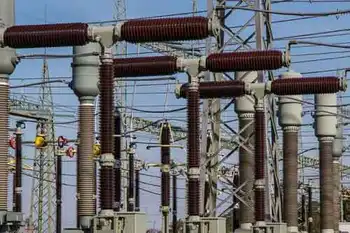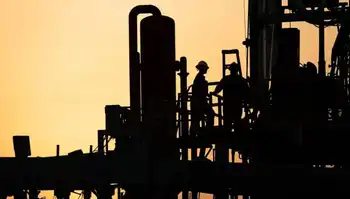Earth tremors leads to second thoughts on geothermal
The geothermal plant, built by Geox, a German energy company, extracts heat by drilling deep into the earth. Advocates of the method say that it could greatly reduce the worldÂ’s dependence on fossil fuels by providing a vast supply of renewable energy.
But in recent months, two similar projects have stirred concerns about their safety and their propensity to cause earthquakes. In the United States, the Energy Department is scrutinizing a project in Northern California run by AltaRock Energy to determine if it is safe. (The project was shut down by the company last month because of crippling technical problems.) Another project, in Basel, Switzerland, was shut down after it generated earthquakes in 2006 and 2007 and is awaiting the decision of a panel of experts about whether it can resume.
The Landau project will be allowed to continue operating while the review panel, which held its first meeting last Friday, deliberates. Geox officials initially denied any responsibility for the temblor and continue to dispute the governmentÂ’s data linking the project to the quake. The panel will, among other things, have to sort through the conflicting data presented by the company and government scientists.
But some experts in the field say they worry that projects like the one in Germany, if the managers deny responsibility for inducing earthquakes or play down the effects on peopleÂ’s lives, could damage the reputation of geothermal energy, even in highly environmentally conscious areas of the world like California or Western Europe.
“My concern is that the project leaders for different geothermal projects are about to waste public confidence as long as they don’t talk openly about the seismic risks involved in their projects,” said Rudolf Braun, who is the leader of the Basel study and is following events in Landau.
Like other earthquakes that have been attributed to geothermal plants, the Landau temblor was sudden and brief and was accompanied by a sound that in some cases has been likened to a sonic boom. There were no injuries and there was no known structural damage to buildings in the city. But the 2.7 magnitude quake has stoked fears and set off debate in the state Parliament, which subsidized the construction of the plant, about the methodÂ’s safety.
The police logged as many as 200 calls after the quake, which struck shortly after 2 p.m. on August 15. Stefanie Schuster was at the local supermarket when she heard a loud bang. She said she wavered unsteadily on her feet “like when you feel dizzy.”
“My first thought was the geothermal plant,” said Mrs. Schuster, 48, a clerk in the city government. “I thought, There’s definitely a problem over there.”
Citing an academic paper, officials of AltaRock, the company running the California project, claimed that the Landau plant caused no earthquakes — a claim that Geox says it never made. In fact, in May, the state geological survey for Rhineland-Palatinate, the state where Landau is located, concluded that four minor earthquakes, too small to be felt by residents, had been generated by the project.
Seismologists at the geological survey said that the larger August 15 quake was also caused by the project. The epicenter was roughly 500 yards from a drill site at the plant and at about the same depth — 1.5 miles — as a steam bed that the plant was extracting heat from. “We are sure it’s from the geothermal plant,” said Harald Ehses, chairman of the geological survey.
In recent interviews, Geox officials conceded that the plant had set off tiny earthquakes and said that they were not certain what set off the Aug. 15 temblor. But consultants for the company dispute the data cited by government scientists to back up their conclusion that the project caused the earthquake: their own data, they said, proves that the quake originated more than two miles from the site of the plant and six miles below the earthÂ’s surface. Those figures would essentially rule out a connection with the plant.
“At this point we can neither deny nor confirm” that the power plant had anything to do with the earthquake, said Peter Hauffe, managing director of Geox.
The Landau plant, which cost $30 million, went into operation in 2007 and produces electricity for 6,000 homes by drawing heat from beneath the bedrock, nearly two miles beneath the earthÂ’s surface. Geox said a coal-burning plant producing the same electricity would emit 30,000 tons of carbon dioxide annually.
Not everyone in town was troubled by the quake. “It’s really not such a big deal,” said Volker Weisenburger, 43. “Gas has its own set of risks.”
But other residents said they were skeptical about the new technology. “The engineers always say that they have everything under control, until something happens that they never expected,” said Sabine Hofmann, 47, who lives near the plant.
Related News

Why the Texas Power Grid Is Facing Another Crisis
DALLAS - The electric power grid in Texas, which collapsed dramatically in a 2021 winter storm, is being tested again as the state suffers unusually hot summer weather. Demand for electricity has reached new records at a time of rapid change in the mix of power sources as wind and solar ramp up. That’s feeding a debate about the dependability of the state’s power.
1. Why is the Texas grid under threat again?
Already the biggest power user in the nation, electricity use in the second most-populous state surged to record levels during heat waves this summer. The jump in demand comes…




